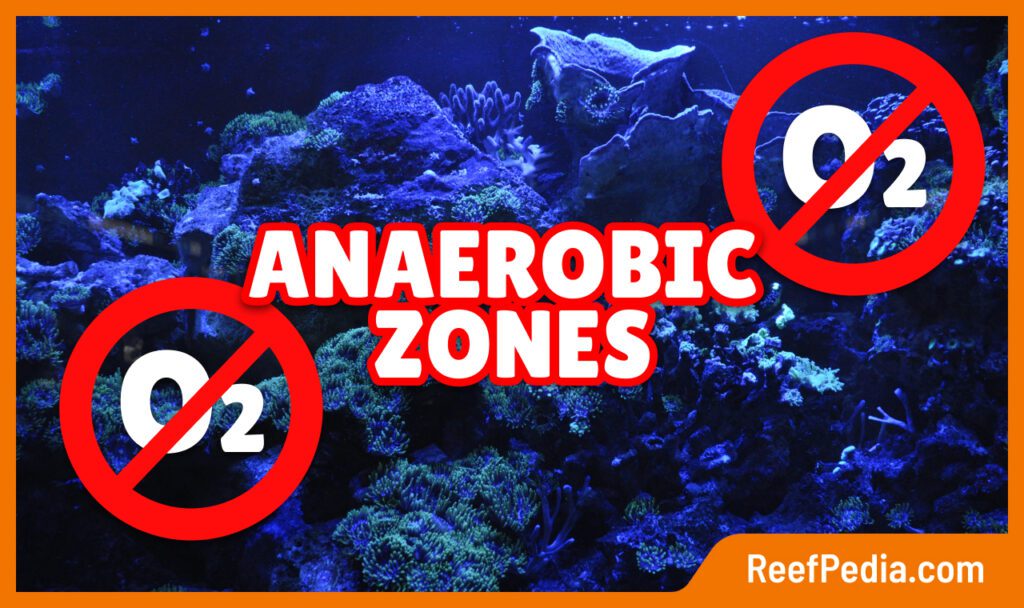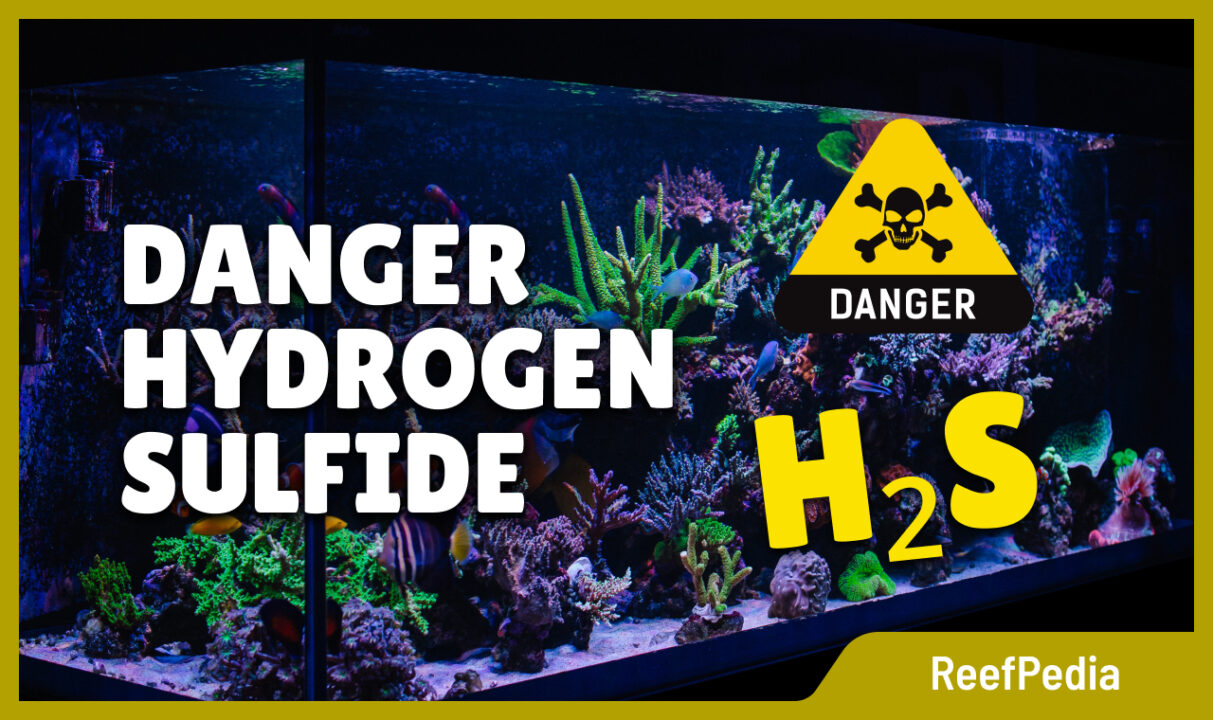Table of Contents
What is hydrogen sulfide (H2S)?
When describing the effect of chemical compounds on marine organisms, it is worth bearing in mind their standard division. It is both an important tool in science and the chemical industry, as well as in marine aquaristics.
You’ve probably heard about the division of chemical compounds into organic and inorganic in one of chemistry classes at school. However, assuming that not everyone remembers what it is all about, I will now go on to explain what the differences are.
Organic compounds (such as amino acids, proteins, sugars) are those that contain carbon in their structure, often also hydrogen, oxygen, nitrogen, phosphorus, sulfur and other elements. On the other hand, inorganic compounds do not contain carbon in their structure or contain it only in the form of simple compounds, such as carbon dioxide (CO2) or calcium carbonate (CaCO3).
Both organic and inorganic compounds are present in marine aquariums. Both types of compounds have their specific applications and affect various aspects of the functioning of a saltwater aquarium. It is important to maintain a proper balance between organic and inorganic compounds in a reef tank.
Keep in mind the dynamics of chemicals in seawater as they can transform. Such transformations most often occur as a result of the following factors:
- Unaware dosing of chemical compounds (preparations of unknown origin or purpose other than marine aquaristics). Supplementation sometimes initiates a chemical reaction with other compounds found in seawater. Ultimately, we will enrich the water in the tank with a completely different chemical compound than we assumed; most often differing in properties and different impact on marine organisms.
- Ambient conditions also initiate chemical reactions, most often these are the so-called redox processes (oxidation and reduction). In this case, the oxidation state of the element in the chemical compound is changed, sometimes generating a chemical compound with increased toxicity to marine organisms. This is also the case with hydrogen sulphide, which is most often formed as a result of the sulfate reduction reaction.
I think it is worth emphasizing that the hydrogen sulfide (H2S) described in this article is dangerous to marine animals. Hydrogen sulfide is an inorganic chemical compound composed of sulfur (S) and hydrogen (H). It is well known that it is a colorless, heavier-than-air gas that dissolves well in water. It is easy to recognize it by its characteristic smell, reminiscent of that of rotten eggs.
High concentrations of hydrogen sulphide can lead to extinction of marine organisms and even severe damage to entire populations of saltwater animals. Therefore, it is important to monitor the concentration of hydrogen sulfide. We should limit the risk of its formation, and if necessary, use appropriate methods of its elimination to reduce toxicity and provide an optimal environment for the organisms in the aquarium.
What are the reasons for the formation of hydrogen sulfide in a marine aquarium?
Hydrogen sulfide is toxic and definitely not a desirable ingredient in a marine aquarium. It is a real threat to marine animals. One of the main reasons for the presence of hydrogen sulfide in the reservoir is anoxic zones. These are areas where oxygen levels are deficient: read more about them in this article.

Anaerobic zones in a marine aquarium
Anaerobic zones in a marine aquarium
Read an interesting article about anaerobic zones in a marine aquarium
Hydrogen sulphide does not get into the marine aquarium from the air, it is mainly formed as a result of chemical reactions taking place in seawater. When setting up a marine aquarium, brine is extremely important. It is well known that brine is necessary to sustain life in a saltwater reservoir, but not everyone is aware that it contains sulfate anions (SO42-), which are, in a way, a raw material for the formation of hydrogen sulfide. Hydrogen sulfide toxicity is more of a problem in marine systems because of the increased concentration of sulfate ions.
In most cases, sulfates in water exist freely as SO42– ions and are very stable in this form. It also happens that sulfate ions form complex compounds with Ca2+, Mg2+, Na+, K+, Fe2+, Fe3+ ions. Complex compounds are chemical compounds in which a central metal ion is surrounded by a ligand (in this case SO42-).
Most often, hydrogen sulfide occurs at the bottom of the aquarium, where there is an excessive amount of organic debris, or in a layer of sand. There are many possibilities for the formation of hydrogen sulfide. However, the biochemical route in the so-called anaerobic zones is, in my opinion, the most important. I consider the causes of this phenomenon described later in the article to be the most important for a marine aquarist.
The presence of hydrogen sulfide is usually blamed on anoxic zones, i.e. areas with low oxygen levels in seawater. Be aware that anaerobic zones provide ideal conditions for the formation of hydrogen sulfide. However, in reality, sulphates (SO42-) can be reduced to hydrogen sulphide (H2S) only biochemically in the anaerobic zones.
Sulfates can be reduced to hydrogen sulfide by several different biochemical reactions, including:
- Sulfate reduction by nitrifying bacteria
- Reduction of sulfates by sulfur bacteria
- Sulfate reduction by anaerobic bacteria
Disturbances in the denitrification process
The denitrification process – that is, the reduction of nitrates (NO3) to nitrites (NO2) and molecular nitrogen (N2) – contributes to the formation of some amounts of hydrogen sulfide. However, it should be processed by other bacteria in the aquarium and never reach toxic levels.
The situation changes when the nitrification process is disturbed, for example due to oxygen deficiency or lack of appropriate pH. This leads to an imbalance of microorganisms in the aquarium. In this case, denitrifying bacteria can start to use sulfur compounds such as sulfates as an alternative respiration substrate, thereby increasing the amount of hydrogen sulfide in seawater.
Sand, misplaced rock and organic debris
Another cause of the formation of hydrogen sulfide in the tank is decomposing organic residues, such as food or animal excrement. When these organic materials accumulate at the bottom of the tank, they become a breeding ground for anaerobic bacteria, which – in the process of decomposition – generate hydrogen sulfide.
Incorrect positioning of the rock also favors the formation of hypoxic sites. When rocks are placed in a way that blocks the flow of water, we limit the amount of oxygen in certain areas, such as crevices or places between rocks.
In addition, a large amount of sand in a marine aquarium can lead to the formation of hydrogen sulphide as a result of chemical, biological and physical processes. which in turn leads to anoxic conditions that favor the formation of hydrogen sulfide.
Hazards related to the presence of hydrogen sulphide in seawater
Hydrogen sulfide is a gas that has an unpleasant odor, is toxic and can lead to poisoning of fish and other organisms in the aquarium. The formation of hydrogen sulfide can also have a negative effect on the pH of the water (it lowers the pH). It disrupts respiratory functions and causes hypoxia. Affected fish show drowsiness, emaciation, respiratory symptoms and sudden death.
How to protect the aquarium?
Undoubtedly, it is better to prevent the formation of hydrogen sulphide than to deal with the consequences of its presence in a marine aquarium. Each of its presence in the tank is toxic to marine organisms.
To prevent the formation of hydrogen sulfide, there are several important points to pay attention to:
- Keeping the aquarium clean
- Regular removal of organic debris
- Proper water circulation
- It is worth providing adequate water filtration and lighting to support biological processes that help maintain a balanced ecosystem in the aquarium
- Refilling the tank with bacteria that carry out the desulfurization process
If you notice signs of hydrogen sulfide in your aquarium, such as:
- Bad smell (rotten eggs)
- Water cloudiness
- Fish behavior that indicates oxygen deficiency, immediate action should be taken
In this situation, it is best to perform a partial water change in the aquarium immediately to increase the amount of oxygen in the water and reduce the concentration of hydrogen sulfide. Perform up to 6 water changes. It is recommended that at each water change approximately 15% of the aquarium water volume is replaced until the hydrogen sulfide is removed. Water prepared for replacement must be characterized by an appropriate level of target salinity. Use salt with the correct parameters and composition for the ICP test.
Sometimes it also helps to increase circulation to aerate and remove hydrogen sulfide from the water, because remember that it is a gas. This procedure is quite risky. Be aware that hydrogen sulphide accumulates at the bottom and its immediate dispersion throughout the aquarium carries the risk of causing more stress to marine animals, which is dangerous.
Summary
To ensure proper development conditions for marine animals, we should prevent the formation of hydrogen sulphide. We can do this primarily through systematic actions described in the section: How to protect the aquarium.
Remember !: Even the smallest amount of hydrogen sulfide is toxic and has a negative effect on marine organisms in the aquarium, and in critical cases can lead to their death.
About author

Magdalena Metzler
Privately, I am a mother and a lover of nature and sport. My main interest is quantum chemistry, which hides a whole lot of unsolved mysteries and connections, which is extremely exciting from a scientific point of view.
In my scientific career, I have conducted international projects focused on innovative solutions for many branches of business, e.g. automotive, construction, and now, of course, marine aquaristics.
Working at Reef Factory gave me a passion for marine aquaristics, which I can develop every day, building a chemistry department and creating products that will help aquarists take care of tanks and ensure the highest safety of animals. One of the most exciting memories of working at Reef Factory is the commissioning of the ICP-OES spectrometer, which analyzes the elemental composition of seawater. The method of analysis in ICP is based on an analytical technique, which is a combination of my passion for quantum chemistry and marine aquaristics.
I hope you find my articles on ReefPedia interesting and helpful! Happy reading :))

